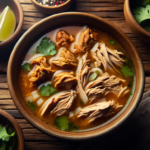
Are Japanese chef’s knives or German chef’s knives better? First, let’s take a step back and take a look at the mighty chef’s knife. Anyone who has stepped foot in a kitchen and made a meal from scratch knows how essential chef’s knives are to cooking. Sometimes called a “cook’s knife,” the chef’s knife is a general utility knife used to cut and prepare a wide variety of food (that often includes meats, vegetables and fruits) in the kitchen.
Although archaeologists have unearthed 2.5 million-year-old tools chiseled from stones that were used to cut meats, modern chef’s knives originated in the 17th and 18th centuries from Japan and Germany, respectively. These knives have such a rich history that it could easily take volumes to properly give them justice.
While we won’t dive into the origin stories of these knives, the key point is that they are said to be some of the best knives in the world. So which is better? Japanese or German knives?
Japanese and German chef knives are two of the most popular types of knives used in professional kitchens around the world. Both types of knives are known for their high-quality construction and sharp, precise blades, but there are some key differences between the two that make them better suited for different tasks and preferences.
What are the characteristics of Japanese chef’s knives?
Japanese chef knives are often made from high-carbon stainless steel or hagane, a type of steel that is used in traditional Japanese swords. These knives are known for their sharp, thin blades, which make them ideal for precision tasks such as slicing, dicing, and mincing. They are also well-suited for cutting through raw fish, a staple of Japanese cuisine, due to their ability to maintain a sharp edge and resist corrosion.
One of the most iconic Japanese chef knives is the santoku, which is similar in shape to a western chef’s knife but has a shorter, wider blade. The santoku is a versatile knife that can be used for a wide range of tasks, including chopping, dicing, and slicing. Other popular Japanese chef knives include the gyuto, which is similar to a western chef’s knife, and the nakiri, which is a long, rectangular knife with a straight edge that is designed specifically for cutting vegetables.
Compared to German chef’s knives, the blade of Japanese chef’s knives are usually:
- thinner blade
- harder steel
- sharper blade
The handle is commonly made of quality wood like:
- chestnut
- walnut
- birch/maple
- cherry wood
Japanese chef’s knives tend to have a thinner, sharper blade with a finer edge than German knives, which makes them well-suited for precise cutting tasks such as slicing fish or vegetables. They often have a pointed tip and a straighter edge, which allows for clean cuts with minimal drag. The handle of a Japanese chef’s knife is typically made from wood or plastic and is attached to the blade using a tang (the part of the blade that extends into the handle).
What is the best Japanese knife brand?
Wondering where you can buy the best quality Japanese knives? Besides traveling to Japan and shopping from the source, you can find many high-quality Japanese knives online. Here are some of the most trustworthy brands you can buy.
- Miyabi Mizu (razor-thin blade that feels thick)
- Nakano (extremely high quality and craftsmanship since 1918)
- Shun (a well-known brand that produces a range of high-quality Japanese-style knives)
Keep in mind that these are just a few of the top brands, but the best knife brand for you will depend on your own preferences and needs.
What are the characteristics of German chef’s knives?
German chef knives, on the other hand, are typically made from high-carbon stainless steel or a type of steel known as X50CrMoV15, which is known for its durability and ability to hold a sharp edge. German chef knives are known for their heavy, sturdy construction and wider, thicker blades, which make them well-suited for tasks that require more force, such as cutting through tougher meats or bone.
One of the most iconic German chef knives is the chef’s knife, also known as a French knife or a cook’s knife. This knife has a pointed tip and a curved edge that allows for a rocking motion when chopping. Other popular German chef knives include the bread knife, which has a serrated edge for slicing through crusty bread, and the utility knife, which is a versatile knife that can be used for a wide range of tasks.
Compared to Japanese chef’s knives, the blade of German chef’s knives are usually:
- thicker
- softer
- more durable
The handle is commonly made of hardwood like:
- beech
- oak
- ebony
German chef’s knives tend to have a thicker, wider blade with a more robust edge than Japanese knives. They are often more durable and can be used for a wider range of tasks, including chopping, dicing, and mincing. German chef’s knives often have a more curved edge and a rounded tip, which allows for a rocking motion when chopping. The handle of a German chef’s knife is often made from a synthetic material such as polypropylene and is attached to the blade using a full tang (the tang extends the entire length of the handle).
What is the best German knife brand?
- Wusthof (a well-known brand that has been producing knives for over 200 years)
- Zwilling J.A. Henckels (another well-respected German brand that has been in business for over 250 years)
- Messermeister (a California-based company that produces a range of high-quality kitchen knives from German steel)
It’s worth noting that these are just a few examples, and there are many other great German chef knife brands to choose from. Ultimately, the best brand for you will depend on how you plan on using it and your individual preferences.
Are German or Japanese knives better?
When it comes to choosing between Japanese and German chef knives, the decision ultimately comes down to your aesthetic tastes, personal feel and the tasks that the knife will be used for. Japanese chef knives are generally more precise and lightweight, making them ideal for tasks that require a high level of control and finesse. German chef knives, on the other hand, are sturdier and better suited for tasks that require more force, such as cutting through tougher meats or bone.
In conclusion, both Japanese and German chef knives are high-quality options that are widely used in professional kitchens around the world. Regardless of which type of knife you choose, it is important to invest in a knife that is well-made by a top-quality knife manufacturer and will last for many years to come.







